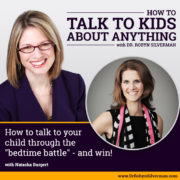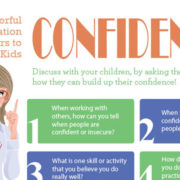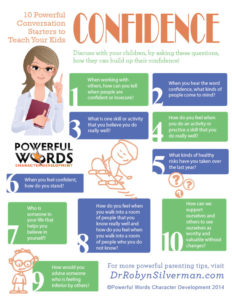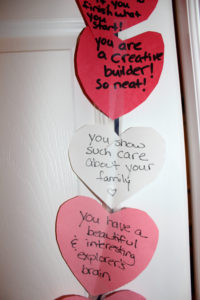How Can Trump Be President When He’s Been So Mean? And Other Questions Children Are Asking After the Trump Victory
If you were to ask my children what phrase I repeat most, aside from “I love you,” they would likely reply; “Be kind and thoughtful.” Being a mother and a Child Development Specialist, building character is woven into the fabric of both my professional and personal life.
This morning, my 7-year-old daughter asked me, “But how can Trump win when he’s been so mean? Will he be mean like that as president?”
Perhaps you are having similar questions asked of you at home. After all, we spend much of our children’s childhoods talking to them about being kind, putting ourselves in other people’s shoes, thinking before we speak angry, cruel or ugly words. We also tell them that you catch more flies with honey, good people finish first and lift others up rather than tear them down.
It’s a confusing time. So how do we answer our children’s questions?
(1) Am I safe?
Children often worry about their safety first—especially when they see so many adults upset about the outcome of an event or election. Reassure them; “We are safe. Many adults work around the clock to keep us safe. I am working to keep you safe and so are your teachers. But even people you can’t see are working to keep you safe. We will be okay, even though there are many people upset and frustrated right now.”
(2) So he gets to make all the choices?
Children often view a president as the sole authority figure who gets to make all the choices. So tell them; “In America, one person does not get to make all the decisions. There are many people, with lots of education and experience, who work together with the president to make the best choices for our nation.”
(3) But what about all the things he said?
Donald Trump offended many people. Yes, even presidential candidates make mistakes. It’s okay to be disappointed in what he said. Just as he wants change for the country, he will need to work on changing the way he speaks and thinks about our diverse America. He will need to focus on making all Americans, no matter what the color of their skin, who they love or how they prey, feel represented and important over his presidency. As you know, America is about unity and justice for all. Mr. Trump has a lot of work to do and he says that he will work hard to be everyone’s president. Let us root for him to be the person he needs to be as president.”
(4) Doesn’t this tell everyone that people can be mean and still get to be president?
Discuss your values. Say; “It is not right to make other people feel inferior or insignificant. What Mr. Trump said about many people was not right. We do not feel he should talk in a mean way about others who are different from him. In our family, we believe in treating others with kindness and empathy. Our friends and family also believe in treating people with kindness and empathy. As president, we will hope that Mr. Trump will lead with character as he leads this country. In the mean time, you continue to be the good-hearted person you are, fight for what you believe is right (as we will too) and we will support you every step of the way.”
(5) Why did people vote for someone who said such mean things?
Most people did not like the way Trump spoke about women, minorities, immigrants, those who were disabled and other communities. Still, many people voted for Trump. Explain to your children; “While many people did not like the way Mr. Trump spoke to and about others who were different from him, many people were angry and wanted change. They didn’t like the way the country was being run. They felt they were overworked and underpaid. They believe that Donald Trump, since he has built a lot of buildings and had a lot of success in business, can make America work better.
(6) Is Donald Trump a bad person?
We can tell our children; “We must look for that good, align ourselves with that good and see that good in people, even when they have made bad choices. There are many good people who work in our government—many, many good people. They will stand up and say what is right. We know of Donald Trump from TV and from this election but we don’t know everything about him. We need to look for the good in him and pray that he shows that good to the world as he will represent our country. We can not focus on being fault-finders, but rather, strength-finders as we get to know Donald Trump.”
(7) Is America going to be okay?
No American wants to see America fail. “We will be okay. America is still the land of the free and the home of the brave. We have a rich history and amazing opportunities here in America. We are profoundly fortunate people even as we fight for what is right for all. We have much to give and contribute to this world. We will keep hope, keep believing, keep working and keep fighting for what is right, good, fair and necessary. Americans don’t give up!”
For many Americans who voted differently, there will be a grieving time. That’s okay. It’s normal to be frustrated, disappointed, angry or sad. Your children may reflect these sentiments back to you. Support them and be kind to yourself too.
For many Americans, this will be a time of reflection. Many people wanted to celebrate the first woman president and the sound of the glass ceiling breaking. They wanted to share it with their children. They wanted to share it with their mothers, their grandmothers, their Aunts and their sisters. There was hope. And while there is sadness, there still must be hope.
Finally, remember; a “Big Talk” with our children is really a series of many discussions that happen over time. Keep the door open, stay available for questions and feel free to say; “I don’t know.” And if you don’t like the way the conversation goes the first time, know there is always time for revision—to try again—and to even change your point of view. Sometimes, change can be good. In America, right now, we are counting on that.



 Family rules. Something every family needs but likely has not formally discussed or written down. Think about it– does your family have known, documented family rules?
Family rules. Something every family needs but likely has not formally discussed or written down. Think about it– does your family have known, documented family rules?



 Do you want your children to learn how to be confident but you aren’t sure how to start the conversation? The Powerful Word of the Month for June is Confidence! Confidence us a combination of trust, conviction and assuredness. Confident people are aware of their strengths (but don’t brag about them) and they also know their weaknesses and what they need to work on (but don’t shame themselves). They have a feeling of inner certainty and overall, believe in themselves.
Do you want your children to learn how to be confident but you aren’t sure how to start the conversation? The Powerful Word of the Month for June is Confidence! Confidence us a combination of trust, conviction and assuredness. Confident people are aware of their strengths (but don’t brag about them) and they also know their weaknesses and what they need to work on (but don’t shame themselves). They have a feeling of inner certainty and overall, believe in themselves.
 In honor of Valentine’s Day, I saw a few great photos circulating the internet a few weeks back showing how parents can put hearts on their children’s door with cute of funny reasons why they love their kids. I decided to take inspiration from that idea and put hearts on my children’s doors (as you can see throughout this blog post) to recognize their character and praise the actions they take that help others.
In honor of Valentine’s Day, I saw a few great photos circulating the internet a few weeks back showing how parents can put hearts on their children’s door with cute of funny reasons why they love their kids. I decided to take inspiration from that idea and put hearts on my children’s doors (as you can see throughout this blog post) to recognize their character and praise the actions they take that help others.







 I want you to know that I see you. Parenting is hard and there are days, perhaps weeks or at least moments of any given week that many parents know they are supposed to be coming up with 50 ways to bolster their children’s self esteem and redirect their impulsive choices but what they are actually thinking about is 100 ways their child is acting like a pain in the butt. These are not bad people. They are real people with real feelings. They may be you. They may be me. There is no judgement here. I get it. And you know what? You’ve got this. You do. And on the days you mess up, as we all do? There is always another moment to try again. Parenting is the ultimate do-over. Thinking of you and reminding you, you are 10x the parent you think you are. xoxo
I want you to know that I see you. Parenting is hard and there are days, perhaps weeks or at least moments of any given week that many parents know they are supposed to be coming up with 50 ways to bolster their children’s self esteem and redirect their impulsive choices but what they are actually thinking about is 100 ways their child is acting like a pain in the butt. These are not bad people. They are real people with real feelings. They may be you. They may be me. There is no judgement here. I get it. And you know what? You’ve got this. You do. And on the days you mess up, as we all do? There is always another moment to try again. Parenting is the ultimate do-over. Thinking of you and reminding you, you are 10x the parent you think you are. xoxo 

 So many of my best “body image” conversations with my daughter happen in the bathroom while we are getting ready for bed. It is where I’ve gotten the question;
So many of my best “body image” conversations with my daughter happen in the bathroom while we are getting ready for bed. It is where I’ve gotten the question; 

 Of course, when we finally realize that something is “going on” with the kids in our life, it’s often been going on for some time. We wonder how we could have missed it. Let’s not beat ourselves us here. Being a parent (or teacher) today can be overwhelming and you are likely doing a pretty bang up job. We can always learn and get better- but that doesn’t mean we stink at it—it just means that we are forever learners and improvers. That’s where we are right here, right now.
Of course, when we finally realize that something is “going on” with the kids in our life, it’s often been going on for some time. We wonder how we could have missed it. Let’s not beat ourselves us here. Being a parent (or teacher) today can be overwhelming and you are likely doing a pretty bang up job. We can always learn and get better- but that doesn’t mean we stink at it—it just means that we are forever learners and improvers. That’s where we are right here, right now.